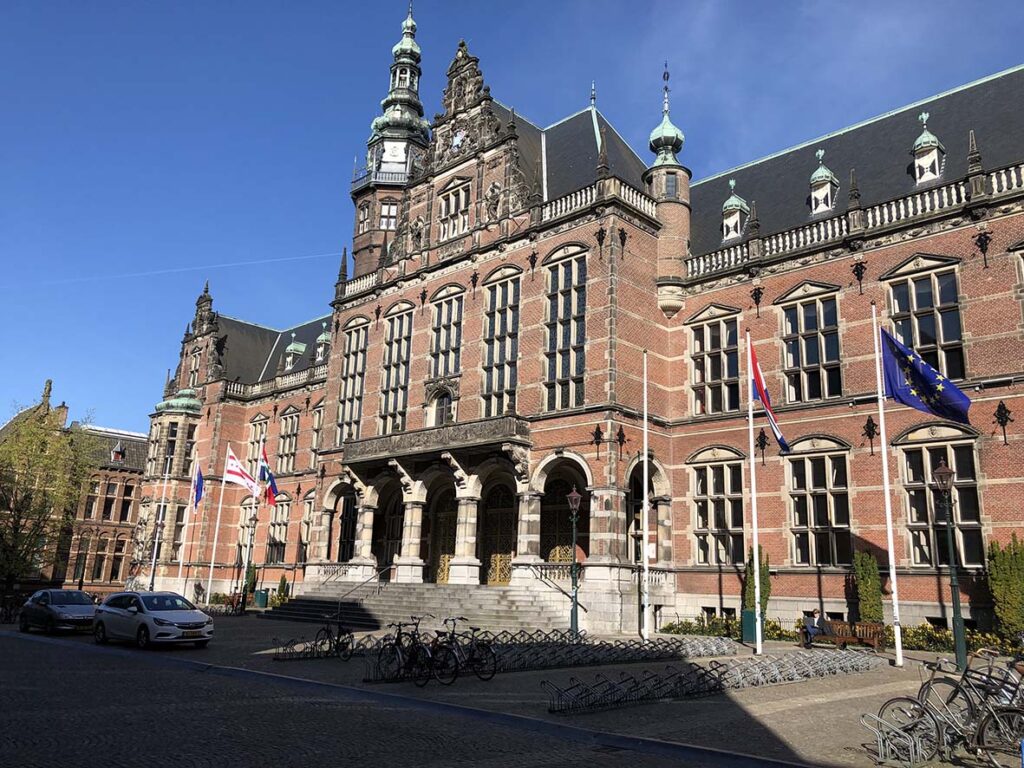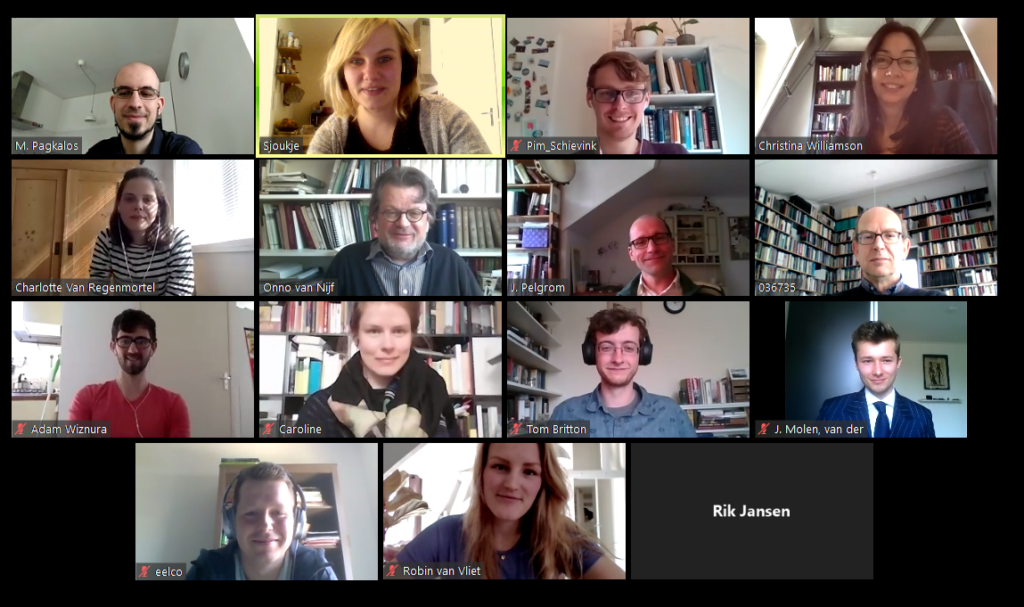Usually crammed with bicycles and students hanging out or darting across to the library, the Academieplein in the Broerstraat in front of the signature-building of the University of Groningen has never looked so barren as it does now – not even in summer. Although I will admit to enjoying the quiet, it is at the same time a depressing sight. But is it the vacancy, or the building itself, that seems out of place?

What is it about a place that gives meaning to a crowd or public gathering? The current modus operandi for non-essentials such as myself of working-at-home (or ‘shelter-in-place’) provides a unique chance to observe the impact of physical interaction and group dynamics through their absence, as we shift our social spheres to virtual reality.
Of course, we do everything we can under the circumstances to stay connected, and might even have more contact hours than under regular working conditions. What we do have at least is a new perspective of each other in our domestic habitats, and our own self-created places at home. Yet the move of meetings to online formats also demonstrates what we lose when we are no longer within each others’ breathing spaces. The knock on the door, the informal quip in passing, the short chats at the coffee machines, the rolled eyes, all of which are simple mechanisms of building ties. Even the basic impossibility of making true eye-contact (rather than staring at your webcam, or staring at a screen of someone staring at their webcam, or looking down because they are staring at you) means we miss out on so many subtle forms of communication.
Eye contact can generate the kind of mutual connection that is so vital to human interaction (Schilbach 2015). In his volume on rational rituals, Michael Suk-Young Chwe (2001) considers this to be essential to coordinate action, instantaneously generating common knowledge through the reciprocal sense of ‘I know that you know that I know that you know that …’. Spaces of ‘inward-facing circles’, e.g. theaters, stadia, facilitate this mutual gazing. But there is more to human contact than the gaze. What would Erving Goffman have to say, with his ‘interaction rituals’ (1967), or Randall Collins, who developed this into ‘interaction ritual chains’ (2004), have to say about our new disembodied world? These theories, among others, stress the importance of presence as we physically respond, even subliminally mimic, each other’s social behavior in ritual (i.e. habitual or customary) settings.
So what happens to our rituals when they are ‘out of place’? Physical religious gatherings these days are taboo, how does that change the rituals? We know that ritual is affected and (partly) determined by their spaces, but we also know of the impact of ritual on space, the deep recurring patterns of habit and memory etched into the surfaces of cathedrals, but also market squares, supermarkets, and even the steps of the Academie Building in Groningen. So the larger question is, what happens to our places when they are ‘out of ritual’? We perform ‘place-making’ processes by making them part of our lives, whether consciously, e.g. ‘my office’, ‘my church’, ‘my city’, or subconsciously, e.g. by taking the same route, parking your bike or your car in ‘your spot’, internalizing certain landmarks, however accidental. We mark these places through the rhythm of the day and they become part of our lives. How will this change once we are released back into them?
Some literature
- Chwe, M.S.-Y. (2001) Rational ritual. Culture, coordination, and common knowledge, Princeton: Princeton University Press.
- Collins, R. (2004) Interaction ritual chains, Princeton Studies in Cultural Sociology, Princeton: Princeton University Press.
- Goffman, E. (1967) Interaction ritual. Essays on face-to-face behavior, New York: Doubleday.
- Schilbach, L. (2015) ‘Eye to eye, face to face and brain to brain: novel approaches to study the behavioral dynamics and neural mechanisms of social interactions’, Current Opinion in Behavioral Sciences 3, 130-135.

